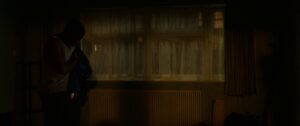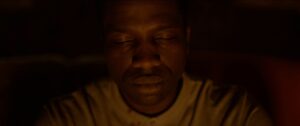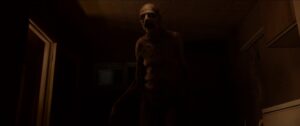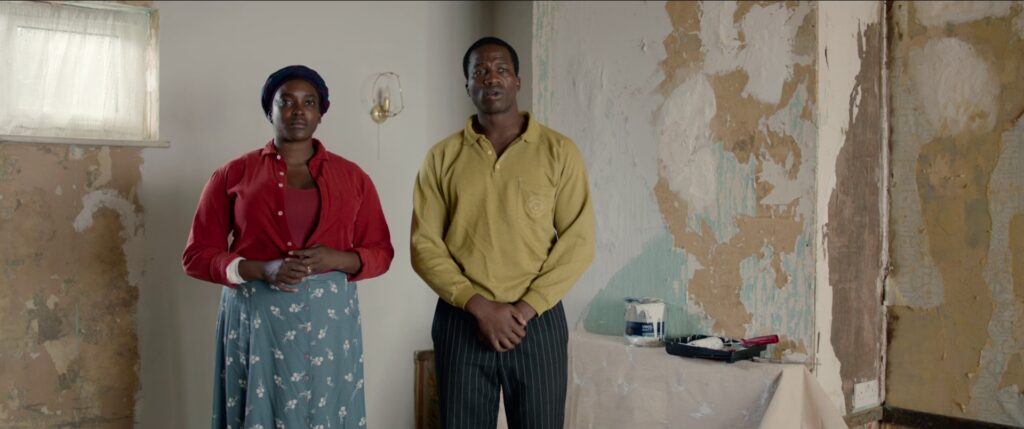
“His House” is a gutpunch of a film that uses horror to peel back the layers of trauma, guilt, and the immigrant experience. Directed by Remi Weekes, this 2020 psychological horror doesn’t just scare you, it makes you sit with the kind of fear that lingers long after the credits roll.
Bol and Rial: Haunted by More Than Just Ghosts
Bol and Rial are South Sudanese refugees trying to start over in the UK. But their new home isn’t the sanctuary they hoped for. Instead, it becomes a battleground for their past traumas. The house is filled with eerie whispers and shadowy figures, but the real horror lies in their memories, especially the loss of a young girl named Nyagak during their escape. As the story unfolds, we learn that Nyagak wasn’t their daughter but a child Bol took to secure passage on a bus out of a war zone, leaving her real mother behind. This revelation adds a heavy layer of guilt to their already burdened consciences.
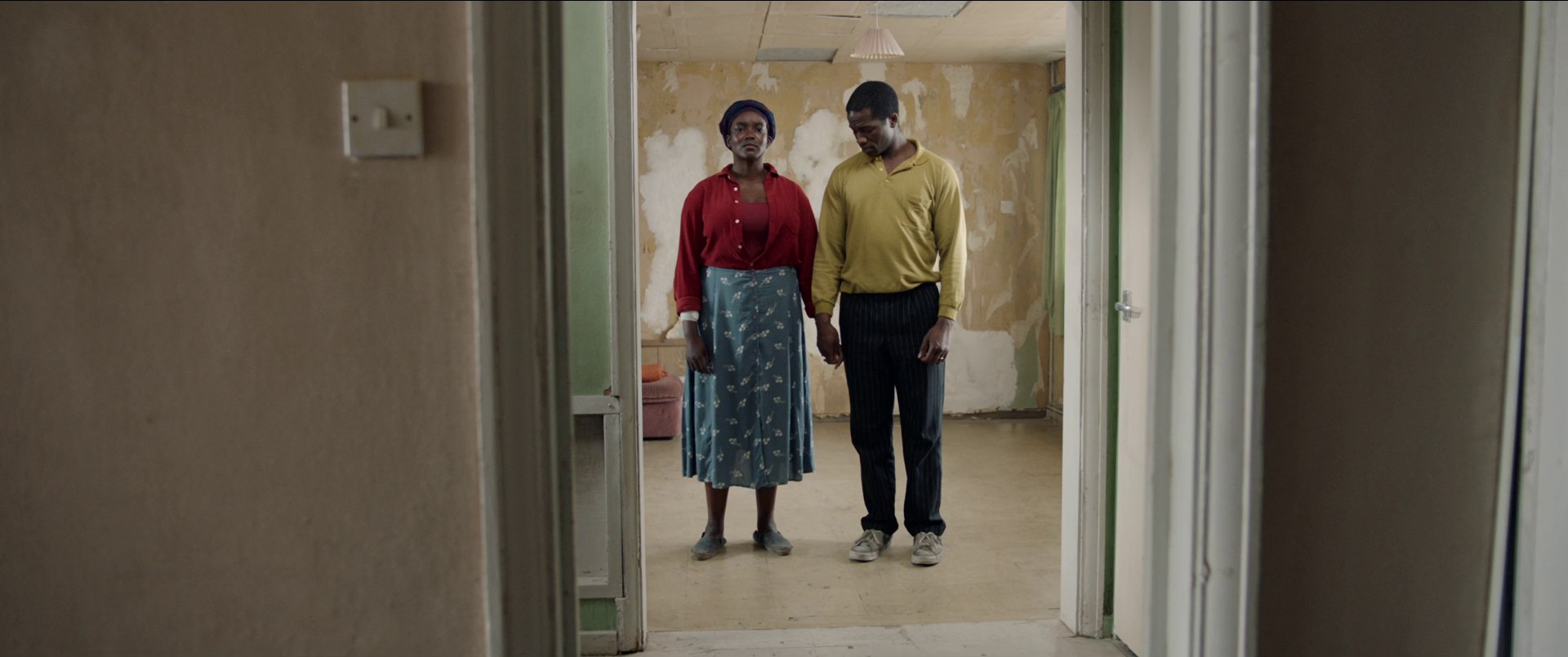
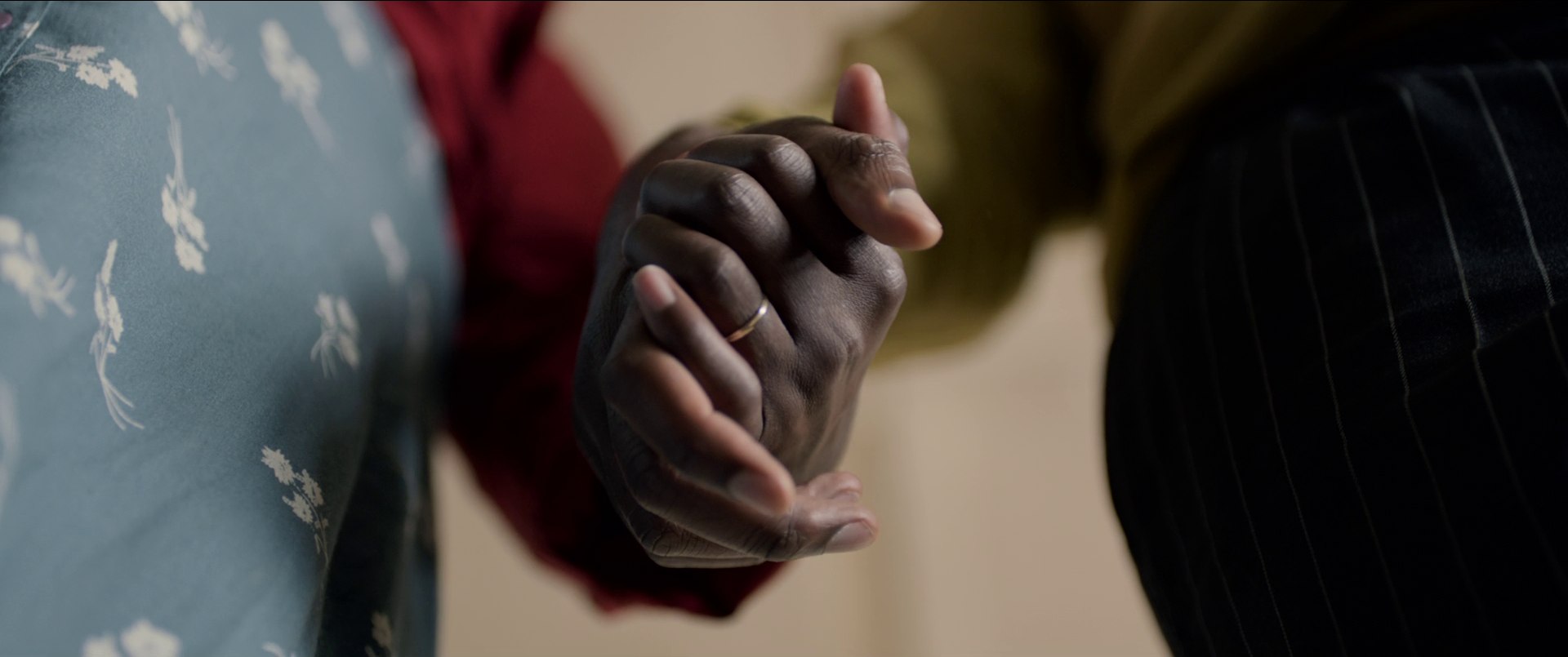
The Apeth: Manifestation of Guilt
The supernatural entity haunting them is called an Apeth, or “night witch,” from Sudanese folklore. This creature isn’t entirely ghost. It’s a physical embodiment of their guilt and the debts they owe for their past actions. The Apeth demands repayment, forcing Bol and Rial to confront the moral compromises they’ve made.
Survivor’s Guilt and the Immigrant Experience
His House takes direct focus into survivor’s guilt. Bol tries to assimilate, believing that adapting to British culture will absolve him of his past. He insists on eating with utensils and speaking English, distancing himself from his roots. Rial, however, clings to their traditions, understanding that erasing their identity won’t erase their pain. Their differing coping mechanisms highlight the psychological toll of displacement. The film portrays how the trauma of war and the challenges of assimilation can fracture relationships and individual psyches.

The House as a Metaphor
The dilapidated house symbolizes the fragile state of their mental health. Its crumbling walls and dark corners mirror the cracks in their emotional armor. The house traps them, just as their unresolved traumas and secrets do. It’s not just a setting; it’s a character that reflects their inner turmoil.
Acceptance and Redemption
In the climax, Bol offers his life to the Apeth in exchange for Nyagak’s. But Rial intervenes, killing the Apeth and choosing to face their past together. This act signifies acceptance of their guilt and a commitment to healing. They decide to stay in the house, embracing their ghosts rather than running from them.
A Horror Story Rooted in Reality
His House transcends traditional horror by grounding its scares in real world issues. It’s an eyeopening exploration of how past traumas can invade the present, especially for those who’ve fled unimaginable horrors. The film challenges viewers to consider the psychological scars carried by refugees and the complexities of starting anew in an unwelcoming environment.





